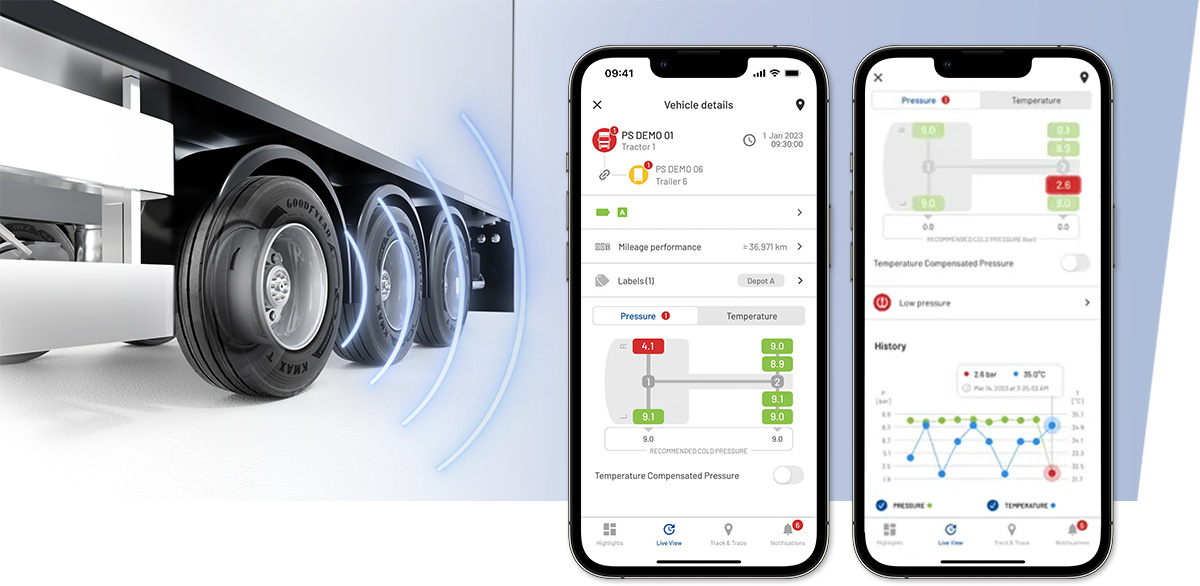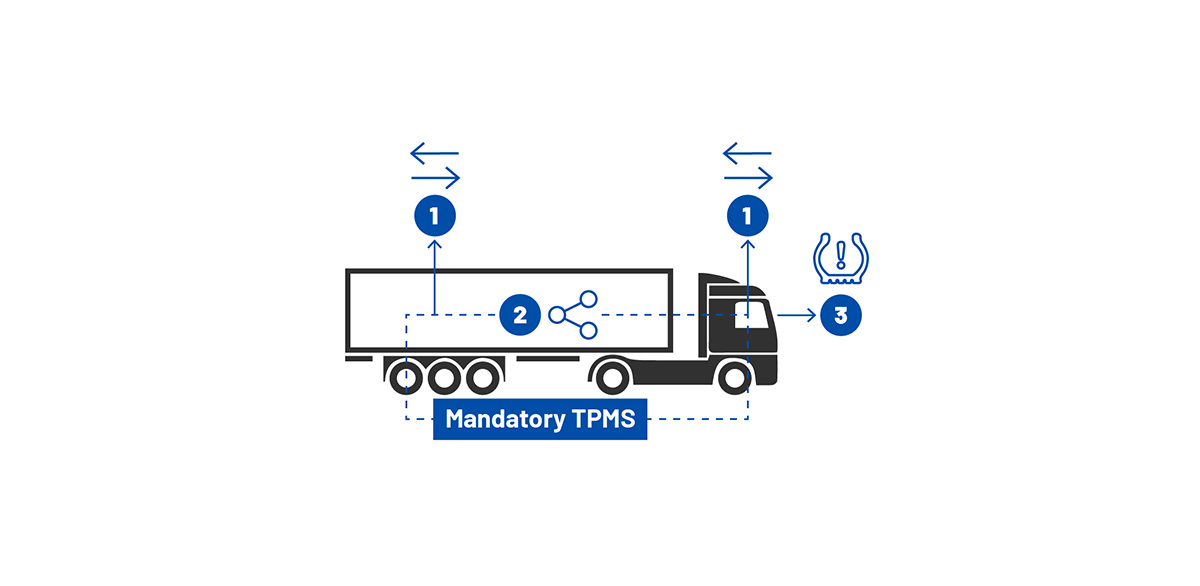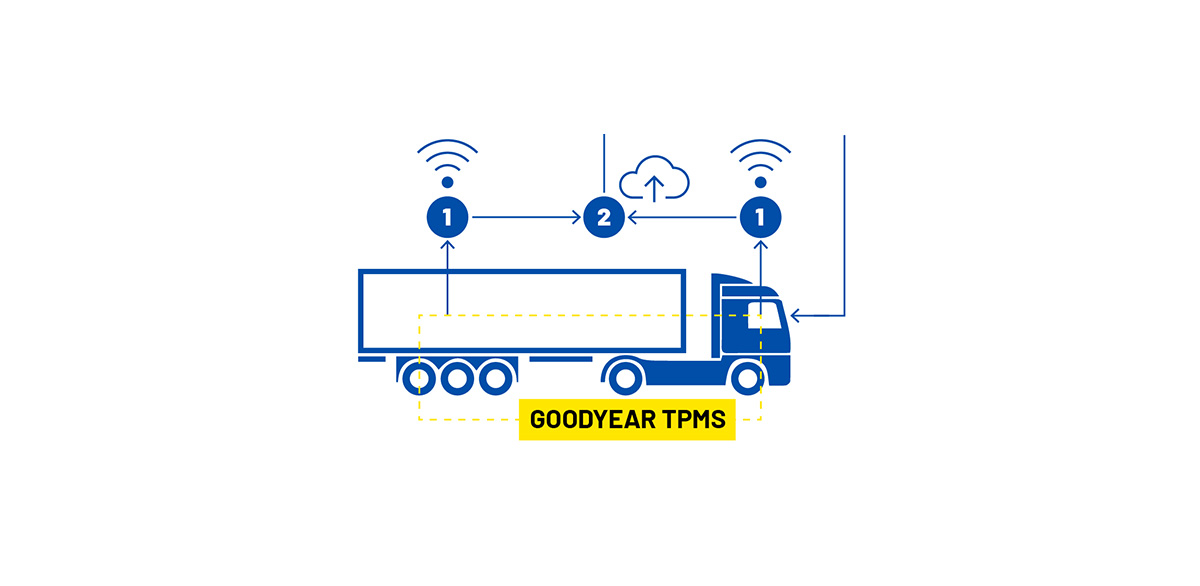Tyre pressure monitoring systems (TPMS) become a compulsory fitment across Europe on all new trucks, trailers, buses and coaches. From July 2022 the updated regulation focusses on new type approvals and from July 2024 all new M2, M3, N1, N2, N3, O3, O4 vehicles should be equipped with a working TPMS for registration.
The legislation is driven primarily by safety and reducing greenhouse gas emissions. Incorrectly inflated tyres wear faster and waste fuel, as well as being at risk of unexpected failure. Clearly, mandating TPMS is a step forward for safety and efficiency.
However, Goodyear recommends that operators look into advanced solutions that harness the functionality of TPMS with the power of intelligent tyre management solutions. Goodyear Total Mobility does not only offer you a trusted TPMS solution, but it also offers you access to a full suite of fleet management solutions.









